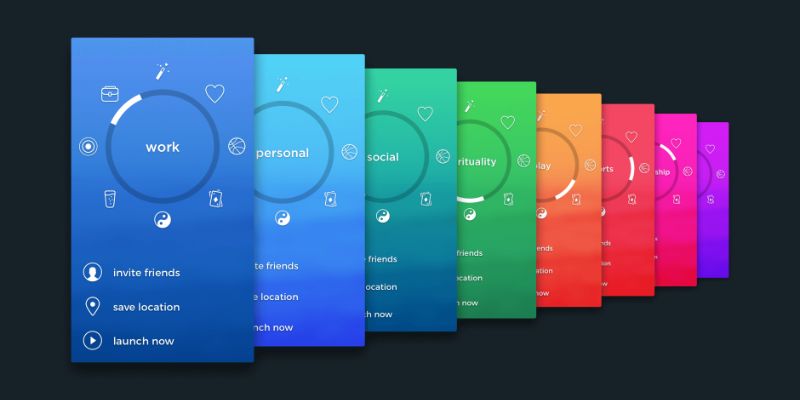Color schemes are fundamental in UI/UX design, influencing user perception, behavior, and overall experience. A well-chosen color palette can enhance usability, evoke desired emotions, and guide user interactions effectively. Conversely, poor color choices can lead to confusion, decreased engagement, and a negative user experience. This blog explores the impact of color schemes on UI/UX design, delving into color psychology, best practices, and the importance of accessibility.
Understanding Color Psychology in Design
Color psychology examines how colors affect human emotions and behaviors. In design, selecting colors that align with the desired user experience is crucial. For instance, blue often conveys trust and professionalism, making it popular in corporate websites. Red can evoke urgency or excitement, suitable for call-to-action buttons. Understanding these associations helps designers create interfaces that resonate with users on a deeper level. For aspiring UI/UX designers, taking a UI UX Developer Course in Chennai can provide valuable insights into leveraging color psychology in design to improve user interaction and engagement.
The Role of Color Schemes in User Engagement
A thoughtfully crafted color scheme can significantly boost user engagement. Colors guide users’ attention, highlight important elements, and create a cohesive visual experience. For example, using contrasting colors for buttons can make them stand out, encouraging users to take desired actions. However, it’s essential to balance contrast and harmony to avoid overwhelming users.
Best Practices for Implementing Color Schemes
- Consistency: Maintain uniformity in color usage across the interface to create a cohesive and intuitive experience.
- Contrast and Readability: Ensure sufficient contrast between text and background colors to enhance readability and accessibility.
- Cultural Sensitivity: Be aware of cultural differences in color perception to avoid misinterpretations.
- User Testing: Conduct usability testing to gather feedback on color choices and make data-driven decisions.
The Impact of Clashing Colors
While contrasting colors can be effective, clashing colors may harm usability. High saturation and brightness levels can lead to visual discomfort, making it difficult for users to focus and navigate the interface. It’s crucial to balance contrast to maintain user comfort and engagement.
Color Accessibility Considerations
Designing with accessibility in mind ensures that all users, including those with color vision deficiencies, can navigate and interact with the interface effectively. Utilizing tools to check color contrast ratios and incorporating alternative indicators can enhance accessibility.
Color schemes are more than just aesthetic choices in UI/UX design; they are powerful tools that influence user behavior and experience. By understanding color psychology, adhering to best practices, and considering accessibility, designers can create interfaces that are not only visually appealing but also functional and inclusive. Thoughtful color selection and application are essential in crafting user experiences that are both engaging and effective.
For those interested in mastering UI/UX design, enrolling in a comprehensive course can provide valuable insights and practical skills. The Artificial Intelligence Course in Chennai provide expert training, covering tools and techniques essential for designing intuitive, user-centered experiences.




